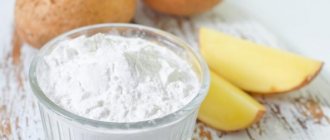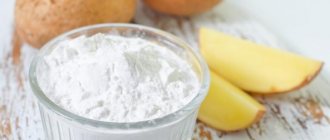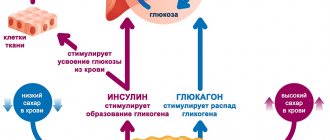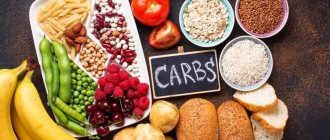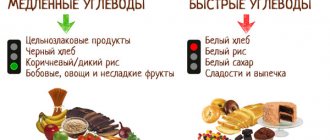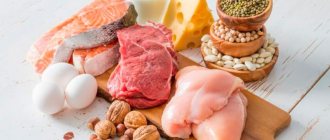What are fast carbohydrates and how do they differ from slow carbohydrates? Why are they important?
Carbohydrates (saccharides) are the main source of energy for the body (1 g of carbohydrates gives 4 kcal) - it breaks them down and converts them into glucose, which nourishes tissue cells. Carbohydrates are essentially macronutrients and are made up of fiber, starch and sugar. All of these are essential nutrients for the body. Fiber and starches are slow carbohydrates (complex), and sugars are fast (simple).
Fast carbohydrates are found in sweets, baked goods, and soda. Fast carbohydrates consist of simple sugars (monosaccharides, disaccharides) - the body breaks them down instantly and immediately receives the energy it needs. At the same time, the blood sugar level rises sharply, but falls just as quickly - that is, the energy is only enough for a short time. The fact is that in response to a jump in blood glucose, the pancreas produces insulin, a hormone that normalizes glucose levels. But insulin does not work for long, and after 30-40 minutes the feeling of fullness is replaced by hunger.
Slow carbohydrates are found in whole grain cereals, legumes, and vegetables - they contain more nutrients (vitamins, minerals, antioxidants) than products with simple carbohydrates. Complex carbohydrates have a complex structure and consist of polysaccharides - complex molecular chains that the body breaks down into simpler ones - and this takes time (about 2 hours). While the body is busy with this process, you feel full. At the same time, energy is supplied in doses, but steadily - without sudden surges in sugar, changes in vigor/fatigue.
It is easy to distinguish fast carbohydrates from slow ones - the former consist of one (monosaccharides) or two molecules (disaccharides) and have a high GI (glycemic index) - they recharge quickly, the effect is short-term. The latter contain more than two molecules (polysaccharides) and have a high GI - they work slowly, but for a long time.
Synthesis of glucose from polysaccharides
The body can obtain simple carbohydrates from complex carbohydrates. In this process, one of the important energy units is glucose. It is synthesized by the body independently from polysaccharides. Reserves include:
- glycogen is a substance that accumulates in the cells and muscles of the liver. We get glycogen from sweets, flour products and fruits;
- starch - it is the basic source used for the synthesis of glucose. It is no secret to many that this polysaccharide is found in large quantities in potatoes and cereals.
Structural polysaccharides include:
- Pectin is another source of glucose, as well as a body cleanser. In marmalade and similar confectionery products, pectin is contained in high concentrations. In the food industry, such a substance is used as a thickener and is labeled as E440;
- Cellulose is a specific type of carbohydrate that is not digested, but can provide cleansing of the body and normal digestion. Cellulose (fiber or dietary fiber) is found in vegetables, fruits, bran and grain products.
What does the glycemic index (GI) have to do with it?
Dividing carbohydrates into simple and complex is not entirely correct. There is also a glycemic index (GI) - an indicator of how quickly a product is converted into glucose on a scale from 0 to 100. If carbohydrates are absorbed quickly, then the GI will be high, if slowly, then low. That is, the higher this indicator, the faster the blood sugar level rises, and vice versa. Where did these numbers come from? The researchers measured blood sugar levels after eating a certain food on an empty stomach (immediately after waking up), recorded these levels and divided them into three groups:
- up to 55 – low GI;
- from 55 to 69 – average GI;
- from 70 and above – high GI.
But: you should not focus only on GI; it is also important to take into account the glycemic load (GL) - an indicator of how many carbohydrates a product contains. The GN value can be low - up to 10, medium - 10-19, high - 20 and above.
For example, watermelon has a high GI of 76, but the GL is only 7. This means that blood sugar will not increase much, because carbohydrates make up only 5 g of volume, the rest is mostly water. But even here there are some nuances - GI and GN do not take into account the variety and ripeness of the product, changes after its preparation, or the combination of products in the dish. It is best to focus not on these indicators, but on the quality of the product. The GI of the same potato is very high, but if you cook it correctly (without oil, fatty milk), then there will be no harm from it.
Bulgur
Bulgur is a grain that is usually made from cracked wheat grains.
You can use it in a variety of dishes including tabbouleh salad, porridge and pilaf.
Bulgur is not only versatile and easy to prepare, but also very nutritious.
In particular, it is an excellent source of manganese, iron, magnesium and B vitamins ().
A 180-gram serving of cooked bulgur contains only 25.5 grams of net carbs. This grain is also one of the lowest carbohydrate whole grains available ().
Summary:
A 180-gram serving of cooked bulgur contains 25.5 grams of net carbs. Bulgur is also versatile, easy to prepare and rich in manganese, iron, magnesium and B vitamins.
Why do fast carbohydrates cause you to gain weight?
The fact that simple carbohydrates work faster than their “healthy” counterparts is understandable. Why do people get fat because of them? Because they break down instantly - the body simply does not have time to spend them. As long as the body carries glucose through the blood, you feel full. But as soon as blood glucose levels rise above 100 mg/dL, insulin pushes glucose into fat cells. When insulin does its job, you want to eat again.
In theory, this is what happens: fast carbohydrate – a jump in sugar and insulin – hunger and overeating. But in practice, a person rarely consumes pure carbohydrates - usually the product also contains a lot of fat. For example, 100 g of chocolate contains approximately 50 g of carbohydrates and 34 g of fat - and they contain twice as many calories as carbohydrates. The vicious circle can be broken if you limit portions - eat, for example, not a bar of chocolate, but only a slice. But ideally, replace it with fruit - the same apple contains only 10 g of carbohydrates and 0.4 g of fat.
Spelled
Spelled is an ancient whole grain that has a number of beneficial properties ().
Research suggests that eating more whole grains, such as spelled, may be associated with a lower risk of heart disease, type 2 diabetes, and some types of cancer (, , ,).
Although spelled contains mostly carbohydrates, it contains a lot of fiber in each serving.
For example, a 195-gram serving of cooked spelled contains about 7.5 grams of fiber and 44 grams of net carbs ().
Spelled is also rich in niacin, magnesium, zinc and manganese ().
Summary:
A 195-gram serving of cooked spelled contains 44 grams of net carbs and 7.5 grams of fiber. Each serving is also rich in niacin, magnesium, zinc and manganese.
The importance of carbohydrates in nutrition. Why you can’t completely exclude them and rely on diets
A little bit of everything is good – and here’s why:
1. Slow carbohydrates are a source of fiber and starch - they have a lot of energy value for the body. The most useful type of carbohydrates is fiber - it is not stored in excess fat and even reduces the risk of obesity, controls blood sugar levels and helps the gastrointestinal tract. Starch is also needed in moderation - it feeds beneficial intestinal bacteria, increases insulin sensitivity and helps absorb nutrients. Long carbohydrates in the diet should be at least 50% of the total calories.
2. You can’t completely exclude simple carbohydrates - in moderation they won’t do any harm. Sugar is a source of energy for the brain - it consumes up to 30-40% of glucose from the blood. When you need to quickly replenish glycogen reserves, for example, after a workout, fast carbohydrates also help out. The fact is that during intense training, adrenaline suppresses the work of insulin - and it is responsible for the restoration and growth of muscle mass.
3. You shouldn’t trust diets either - giving up complex and simple carbohydrates does not guarantee weight loss - fats and proteins also affect blood sugar and insulin levels. On a low-carb and keto diet, for example, the first thing you lose is not extra pounds, but water. The fact is that carbohydrates retain water, and instead of losing weight, you will get dehydration and a bunch of other “side effects” (deficiency of vitamins and minerals, nausea, lethargy, sleep problems, headaches). You cannot stay on such diets for a long time, and not everyone can limit themselves to carbohydrates for a long time - without the main source of energy, the body begins to break down fats, and this is not easy. Plus, low-carb diets, like any other, have contraindications.
Barley
Barley is a nutrient-rich grain that has a nutty flavor and a characteristic chewy texture.
This grain is also rich in fiber—each 170-gram serving of cooked barley contains 6.5 grams of fiber and about 41.5 grams of net carbs ().
In addition, boiled barley is an excellent source of selenium, magnesium, manganese, zinc and copper ().
However, whenever possible, choose whole barley over pearl barley (a more refined version of barley) because whole barley is less processed and is considered a whole grain ().
Summary:
A 170-gram serving of cooked whole barley contains 41.5 grams of net carbs. Not only is barley rich in fiber, but it is also an excellent source of selenium, magnesium, manganese, zinc and copper.
How many carbohydrates do men and women need per day?
The daily intake of carbohydrates depends on gender, age, weight, lifestyle and goals:
Women:
- lose weight – 50-55 kg (110 g), 60-65 kg (140 g), 70-75 kg (160 g), 80-85 kg (170 g);
- maintain weight – 50-55 kg (140 g), 60-65 kg (160 g), 70-75 kg (190 g), 80-85 kg (210 g);
- gain weight - 50-55 kg (190 g), 60-65 kg (240 g), 70-75 kg (250 g), 80-85 kg (260 g).
Men:
- lose weight – 50-55 kg (165 g), 60-65 kg (170 g), 70-75 kg (175 g), 80-85 kg (185 g);
- maintain weight – 50-55 kg (220 g), 60-65 kg (235 g), 70-75 kg (245 g), 80-85 kg (265 g);
- gain weight - 50-55 kg (280 g), 60-65 kg (295 g), 70-75 kg (310 g), 80-85 kg (320 g).
The percentage of carbohydrates in your daily caloric intake depends on your goals:
- less than 10% of total calories (reducing carbohydrates is usually used for medicinal purposes, such as for diabetics);
- 10-15% of the total calories (during weight loss for a short period of time, you can slightly limit carbohydrates, especially fast ones);
- 15-30% of total calories (suitable for those maintaining weight);
- more than 30% of total calories (athletes and those who want to gain muscle mass can increase the amount of carbohydrates).
Simple carbohydrates - food list
Fruits and berries: banana, kiwi, lychee, melon, pineapple, watermelon, dates, mango, persimmon.
Vegetables: potatoes, sweet potatoes, carrots, green peas.
Cereals: breakfast cereals, instant cereals, millet, white rice.
Dairy products: rice milk, ice cream, yogurt with fruit.
Sweets and snacks: rice cakes, marmalade, crackers, chips, chocolate, cakes, white bread, chocolate bars, cookies, honey, jam, soda.
For convenience, here is a table of foods with fast carbohydrates:
| Product | Glycemic index |
| Dates | 145 |
| Honey | 89 |
| Watermelon | 76 |
| Chips | 74 |
| Ice cream | 70 |
| Milk chocolate | 70 |
| A pineapple | 67 |
| Melon | 65 |
| Potato | 65 |
| White rice | 64 |
| Banana | 60 |
| Sweet potato | 55 |
Complex carbohydrates - food list
Fruits and berries: apple, blackberry, blueberry, cherry, grapefruit, orange, prunes, pears, peaches, dried apricots, plums, pears, strawberries.
Vegetables: asparagus, spinach, lettuce, radishes, broccoli, celery, cabbage, Brussels sprouts and cauliflower, eggplant, cucumbers, onions, turnips, artichokes, beans, lentils, cucumbers, radishes, carrots.
Cereals: barley, oatmeal, buckwheat, oat bran, brown rice, wheat germ, millet, cornmeal, wild rice.
Dairy products: low-fat yogurt, skim milk.
Seeds and nuts: almonds, peanuts, walnuts, cashews, sesame seeds, flaxseeds, sunflower seeds.
For convenience, here is a table of foods with slow carbohydrates:
| Product | Glycemic index |
| Buckwheat | 50 |
| Brown rice | 45 |
| Pear | 35 |
| Apple | 35 |
| Blackberry | 25 |
| Blueberry | 25 |
| Cherry | 22 |
| Beans | 22 |
| Low-fat yogurt | 19 |
| Asparagus | 15 |
| Spinach | 15 |
| Almond | 10 |
Which carbohydrates are needed for weight gain and which for weight loss? How to use them correctly
For sports purposes, both types of carbohydrates are important - each of them has its own role and benefits (portion sizes, calorie content and product quality also need to be taken into account):
Gaining muscle mass:
- fast carbohydrates - consume half an hour before and after training. In the first case, you will spend them faster than they have time to be deposited in fat, in the second, they will go straight to replenish glycogen reserves in the muscles (no need to worry about excess weight);
- slow carbohydrates – consume 1-2 hours before and after training. In the first case, the energy will last until the end of the session, in the second, the muscles will also recover and grow, but more slowly.
Weight loss:
- fast carbohydrates - you shouldn’t give them up completely, especially when losing weight - this can lead to breakdowns;
- Slow carbohydrates – save you from overeating and are not stored in reserve. While they are digesting, you feel full.
What are the dangers of a lack of carbohydrates?
When the body is deprived of its main source of energy, it immediately begins to sound the alarm - this is how it manifests itself:
- dehydration - with a deficiency of carbohydrates, muscles become “donors” of energy, and they consist of 75% water - fluid reserves at this moment are depleted;
- problems with the gastrointestinal tract - beneficial bacteria feed on fiber in complex carbohydrates, and an excess of fatty and protein foods will lead to constipation and bloating;
- poor health - the body takes a lot of energy to break down fats instead of carbohydrates, plus sugar is closely related to the level of dopamine and good mood (the hormone of joy);
- overeating - slow carbohydrates keep you feeling full for a long time - this is due to the fiber in their composition - it gives volume to food and increases the production of hormones GLP-1 and peptide YY - they reduce appetite.
Oatmeal - a traditional English dish
Oatmeal is the result of processing oats. It is widespread in different countries, but it is the British who traditionally prepare oatmeal for breakfast. This tradition is an excellent example of healthy eating. Slow carbohydrates in the morning will help “wake up” the body, fill it with energy and strength, maintaining beauty and slimness. In oatmeal you can find:
- carbohydrates – 15 g;
- proteins – 3 g;
- fats – 1.7 g;
- iron;
- calcium;
- potassium;
- sodium;
- phosphorus;
- zinc;
- B vitamins;
- vitamins E, K.
Thanks to this composition, this porridge has unique properties:
- Pronounced antioxidant effect.
- Stabilization of metabolism.
- Cleanses the gastrointestinal tract from waste and toxins.
- Reduces cholesterol levels.
- Prevents the formation of atherosclerotic plaques.
- Allows you to improve the condition of the skin, hair, and nails.
- Supports the performance of all organs and systems.
- Strengthens the immune system.
Oatmeal can be cooked in water or milk, supplemented with fruits, berries, nuts or honey. A simple porridge can be turned into a real masterpiece that will not only support the body’s performance, but also lift your spirits. Don't be afraid to experiment! Prepare salted oatmeal by adding some meat or cheese to it.
What are the dangers of a lack of carbohydrates?
When the body is deprived of its main source of energy, it immediately begins to sound the alarm - this is how it manifests itself:
- dehydration - with a deficiency of carbohydrates, muscles become “donors” of energy, and they consist of 75% water - fluid reserves at this moment are depleted;
- problems with the gastrointestinal tract - beneficial bacteria feed on fiber in complex carbohydrates, and an excess of fatty and protein foods will lead to constipation and bloating;
- poor health - the body takes a lot of energy to break down fats instead of carbohydrates, plus sugar is closely related to the level of dopamine and good mood (the hormone of joy);
- overeating - slow carbohydrates keep you feeling full for a long time - this is due to the fiber in their composition - it gives volume to food and increases the production of hormones GLP-1 and peptide YY - they reduce appetite.
Millet porridge as an effective way to combat extra pounds
Despite the name, this type of porridge is made from millet. This is another unique porridge that will allow you to get your body back in shape. This is possible thanks to the composition:
- starch – 70%;
- protein – 15%;
- fat – 3.5%;
- iron – 2.7 mg;
- zinc – 68 mg;
- aluminum – 100 mcg;
- copper – 370 mcg;
- potassium – 211 mg;
- vitamin PP – 1.6 mg;
- vitamin B9 – 40 mcg;
- vitamin A – 3 mcg.
This composition allows millet porridge to have a positive effect on metabolic processes in the body, optimize digestion processes, and cleanse the body of waste, toxins, and salts. All this makes it an indispensable element of proper nutrition and diet for people trying to lose weight.
A large amount of potassium has a beneficial effect on the functioning of the heart muscle, and zinc, iron and vitamins support the functioning of the nervous system, strengthen teeth, nails, hair, and improve the condition of the skin.
In order for millet porridge to retain all its beneficial properties, while remaining a dietary dish, it is better to cook it in water with a minimum amount of salt.
